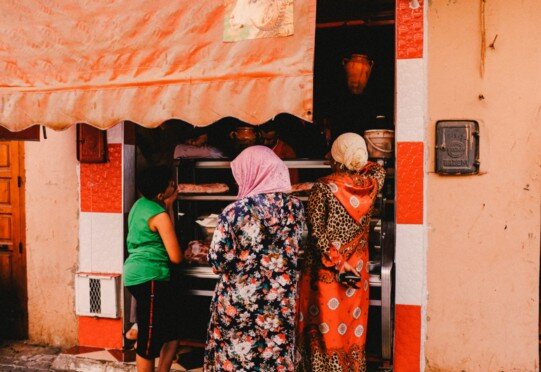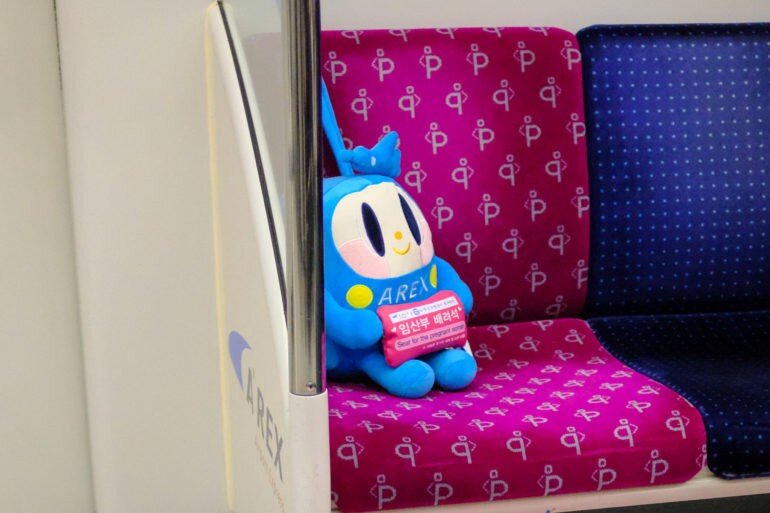Maggie Zhang just spent a year traveling to 25 countries to research and write about fascinating communities.
Learn more about Maggie, the founder of Commonplays, a publication about how design and innovation transforms communities, *and* our new podcast correspondent.
Maggie and I (Bailey) met through a shared friend at IDEO, a design studio that we both worked at in the past.
When we were first connected, Maggie had just spent a year traveling to 25 countries to research and write about fascinating communities — everything from human tower teams in Spain to cultural cafés in Morocco. She documents these stories and values that are most important to her — community, play, and places — on her blog called Commonplays.
Today, Maggie’s a freelance writer, and recently completed a creative residency with Montreal-based design studio Daily tous les jours, which builds public art installations (like musical swings and giant singalongs) to bring people together. She’s also the newest correspondent on our podcast, “Get Together.” We’re so lucky to have her!
We sat down with Maggie for a conversation about her work with Commonplays. We hope you enjoy it, and tune in to hear her on our podcast.
How did Commonplays come to be?
Maggie: I was working at IDEO and felt inspired by the studio’s focus on analogous research: learning from environments and industries completely different from the topic or challenge that you’re focused on.
With that mindset, I left to travel for a year. I was excited about communities and public spaces, and wanted to “design” my own education: visiting 25 countries, living with host families, observing and photographing how cultural values influence communities and spaces. Along the way, I created Commonplays so I could document what I was learning and share that with others, and encourage readers to think more about how places shape and inspire us.
Photos via Commonplace. Chefchaouen, the blue city.
Photos via Commonplace. Women at storefront in Morocco.
What inspired the name Commonplays?
Maggie: I consider the blog as a modern-day commonplace book. Commonplace books were used by artists, writers, and thinkers to record their inspirations, and each book was a reflection of the person behind it. Virginia Woolf, Marcus Aurelius, and Leonardo Da Vinci kept them — and so did fictional characters, like Sherlock Holmes. The word itself is also a mash-up of other words that I love: community, play, places.
A drawing from Henry Tiffin’s Commonplace Book (1760) Source: Peabody Essex Museum
How do you see design influencing how people gather in community?
Maggie: I’m fascinated by how design cues in our environment can shape human interactions. I recently spent time working with an interactive design studio called Daily tous les jours, and it was fascinating how there installations prompt people to behave differently. For example, they set up musical swings, so that people of all ages will swing on them and make music together. They put microphones outside so that people would karaoke together. Oftentimes, people in a community are open to gathering in new ways, collaborating on something fun — but they just need some sort of prompt or push to get them to do it.
Daily tous les jours Musical Swings installation in Montreal, Canada, 2011.
Another example is around park benches. If you see a fixed bench facing nature, like trees or a pond, you’ll likely sit down with a reflective, solitary mindset. But if you see a circular bench, or seating that can be moved, then you’ll likely sit down with a social mindset, wanting to talk to and face other people. There’s so much room to be intentional about how we design our spaces, because they can really contribute to bringing together or pushing apart a community.
Why did you choose Real Food Real Stories as your first interview?
Maggie: After living in the Bay Area for three years, I fell in love with the food scene and wanted to learn more about the stories behind the food I was eating.
Real Food Real Stories is awesome because they bring together the people who make the food with the people who eat the food.
I went to one of their annual storyslams and it was inspiring to hear from my favorite cookbook authors and chefs from local restaurants — it made me feel more connected to what I ate, and the stories I heard still stick with me to this day. In general, I also love their values around generous listening and using food and story to connect us.
Photo taken a Real Food Real Stories gathering.
What stood out to you about your conversation with Real Food Real Stories?
Maggie: Pei-Ru, the founder, beautifully talked about hosts. Her belief is that to create a safe space, you need to make people feel welcomed from their first step into the space. For every RFRS event, there are multiple hosts there to greet each guest, making them feel like they’re part of the community from the moment they walk in. I was inspired by how much Pei-Ru thought about that first interaction, and how she had so much empathy for her guests’ comfort.
Bonus: Popcorn Q&A with Maggie.
As a supplement to the podcast, we hosted an AMA-style conversation with Maggie on our Substack. There, she shared her thoughts on all things community, play and places. Read the full thread here.
What of the many communities you visited on your trip moved you the most emotionally and why?
Maggie: Christchurch, New Zealand! To me, the city is all about resilience. It survived a devastating earthquake, and most recently, the mosque shooting. I remember walking through the central square and witnessing the broken cathedral. It was completely caved out, like a mouth that lost all its teeth, and filled with pigeons — apparently the acidity of their waste over the years caused more damage to the wood than the earthquake itself.
But there were also so many uplifting scenes in the city, all created by the community: street art that reminded citizens of their identity and strength, a ruined fine-dining restaurant that was converted into a food truck to continue serving its customers, a playground that crowdsourced ideas from children to design the ultimate gathering space.
Image via Commonplays of New Zealand playground that crowdsourced ideas.
Specifically, a community that really inspired me there was Gap Filler. It’s an organization of volunteers who use creativity to fill in the gaps left by the earthquake. Residents pitch in to create projects in otherwise vacant sites: bike-powered theaters, history-inspired golf putts, and dance platforms in parking lots. I loved their sense of fun and commitment to rebuilding their city — it felt like the community had an unbreakable spirit, full of resourcefulness, and they came together to rebuild and encourage people to create a sense of home again.
Why do you gravitate towards stories about community, play, and places?
Maggie: I love anything that brings people together. Communities are awesome because they show you that the whole is greater than the sum of its parts…and they just make people happier and healthier 🙂 It’s so important to feel a sense of shared connection and identity, and to have a place where you can build meaningful relationships. I also love how communities can fuel creativity and innovation, kind of like Austin Kleon’s concept of “scenius.”
Image via Austin Kleon of “scenius.”
Play, in general, is a great way to encourage experimentation and engagement. It lowers the intimidation barrier for learning about something new or getting to know people. We had a Design for Play studio at IDEO dedicated to encouraging creativity and imagination across our projects, which taught me a lot about its value.
I also think a lot about how places shape you, especially because I spent some defining years of my life living with host families abroad. I talk about this on Commonplays — how oftentimes, places are considered backdrops to our lives, setting the scene for our other priorities like work, relationships, and health. But I think that places make a deep impact on us, and it’s totally underrated. It’s like how winemakers think about terroir: how a region’s climate, soil, and topography will impact the quality of grapes. In the same way, the places where we grow our roots, the places we inhabit for periods of time, really shape our identities.
What design advice would you give to a community leader who is setting up space to bring people together?
1) Reflect your people: If people see a reflection of themselves in a space, they’ll feel more welcome. A great example is JR’s “Inside Out” project, where he takes photos of residents of a community and pastes them large-scale on public spaces.
2) Reflect your culture: You can include design elements in your space that reflect what makes your community special. For example, K-pop is huge in Korea, so they carved out singing platforms in public spaces for all the street performers.
Image via Commonplays of live K-pop on the streets of Korea
3) Make things fun: If you want to prompt people to act a certain way in a space, you don’t necessarily need to do so with strict rules or caution tape. Another example from Korea — they wanted people to leave room for pregnant women on subways, and instead of using intense signs or colors, they simply left a stuffed animal on the seats to save their spot.
Image via Commonplays of subway in Korea.
4) Crowdsource ideas from your community: This is related to Get Together’s philosophy of building with people. Again, the playground I mentioned in New Zealand is a great example.











